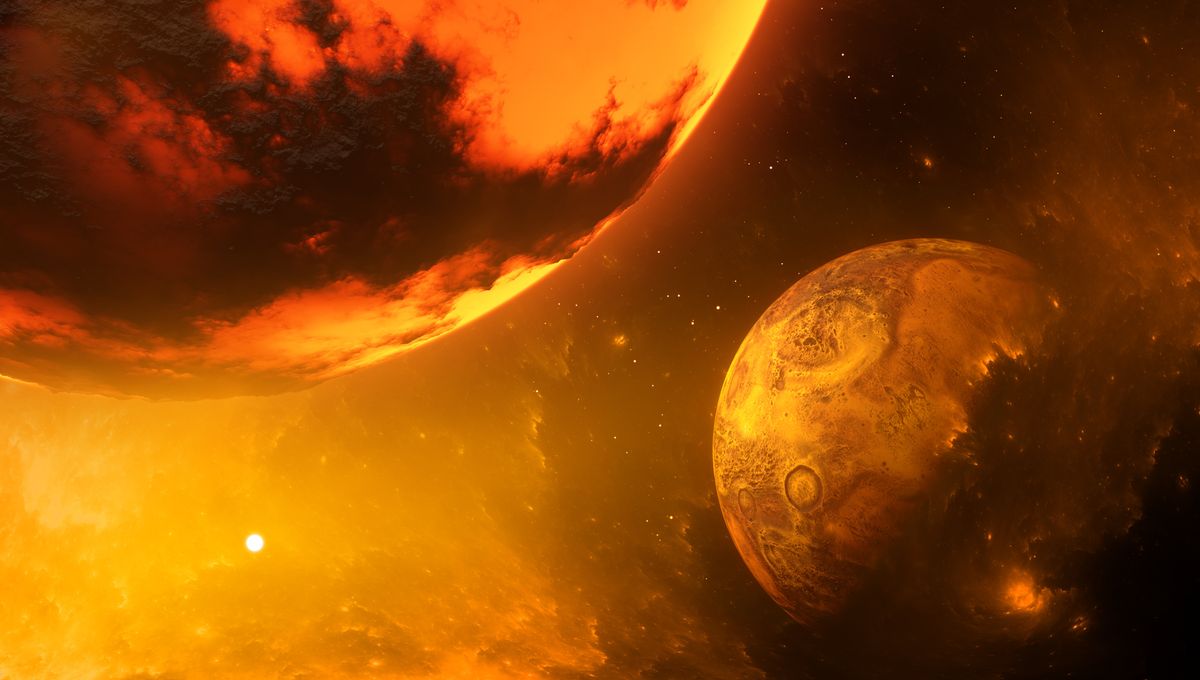
A new paper disputes the widely accepted hypothesis that the Moon is the product of material thrown up when an object known as Theia smashed into the proto-Earth. Once just one explanation among many for why Earth is blessed with such a relatively large companion, the Theia hypothesis is now so dominant many planetary scientists take it for granted. However, comparisons of the composition of the two bodies call this into question and suggest the Moon may be the same age as the Earth, rather than a few hundred million years younger.
As we started to learn about the Solar System, the Earth-Moon relationship stood out and therefore needed explanation. The most similar planet to Earth has no moon at all (Zoozve aside), and the tiny Martian moons hardly compare. There are larger moons in the outer solar system, but these orbit planets so much bigger than Earth that their satellites are puny by comparison. Having a companion so close to Earth in size is exceptional, particularly if you don’t count Pluto as a planet.
The question is considered important because there is a strong case for the argument that, without a satellite as large as our own, Earth would be uninhabitable, at least for complex life on land. If only planets with giant moons can produce civilizations, we’d better know how we acquired one and what the chances are for other planets.
If the Moon did form because of a major impact, we would expect the isotopes that make it up to have abundances similar to those of Earth’s crust, but not quite the same. Theia presumably formed in a different part of the Solar System, and therefore had more of some isotopes and less of others compared to Earth. Both the Earth and Moon would have inherited some of this non-Earthly material, but not in equal proportions, thus leaving the two subtly different.
According to Professor Paolo Sossi of ETH Zurich and co-authors, the two bodies are instead suspiciously similar, with the exception of elements whose lunar absence has a better explanation. Specifically, samples of oxygen, chromium, and titanium have the same ratios of isotopes as Earth’s mantle.
One significant difference between the two worlds is how much less iron the Moon appears to have (7.5 percent by weight compared to 33 percent). Planetary scientists have attempted to explain this mix of similarities and differences in the context of the Theia hypothesis, but the authors argue each proposed model is contradicted by at least one of the things we have measured.
The authors compared the abundance of 70 elements in Moon rocks with their presence in Earth’s mantle and crust. They found a lack of elements that turn more easily to gas than lithium. This indicates the Moon formed from the same material as the Earth, they argue, but its lower gravity meant certain elements largely escaped. Those elements that require temperatures greater than 1,130° C (2,060° F) to vaporize were left behind in usually similar quantities.
In this scenario, both the Earth and the Moon saw some elements sink to the core, depleting the mantle and crust. The Moon’s core – around 600 kilometers (360 miles) across – is so much smaller than the Earth’s that this difference accounts for some of the other variations we see.
One way to explain the Earth-Moon similarity is if Theia pulverized the Earth so comprehensively everything mixed so well that both bodies got the same proportions of each. This, however, doesn’t fit with our understanding of what happens when a planet-sized object hits something ten times its size.
Sossi’s alternative is to suggest that the Moon and Earth formed independently, but out of material at the same distance from the Sun. It’s not clear how this would have occurred, since their source material would need to have been very similar. If the Moon was a captured object that had formed either closer to or further from the Sun, it’s composition should be much more different.
Interesting as the evidence provided is, it doesn’t really explain the factors that led the Theia hypothesis to become popular in the first place. These include the high angular velocity of the system, as would be expected if Theia delivered an almighty kick, and how close the plane of the Moon’s orbit around Earth and Earth’s around the Sun are to each other. Nor does the work deal with other evidence interpreted as supporting Theia, or anomalies within the Earth’s crust.
Alternatives to the Theia hypothesis do pop up occasionally, such as one that argued the ring of material that became the Moon came from multiple smaller impacts. So far, none of these have proven convincing to the vast majority of lunar scientists.
When humans establish a more long-standing presence on our companion, one of the first things we will do is dig deeper into it than the Apollo missions could. This may provide answers to the issues Sossi and co-authors raise, or confirm their suspicions.
The study is to be published in the Treatise on Geochemistry and a preprint is available on ArXiv.org.
[H/T Anton Petrov]
Source Link: The Standard Story Of The Moon’s Origins Is Facing Another Challenge